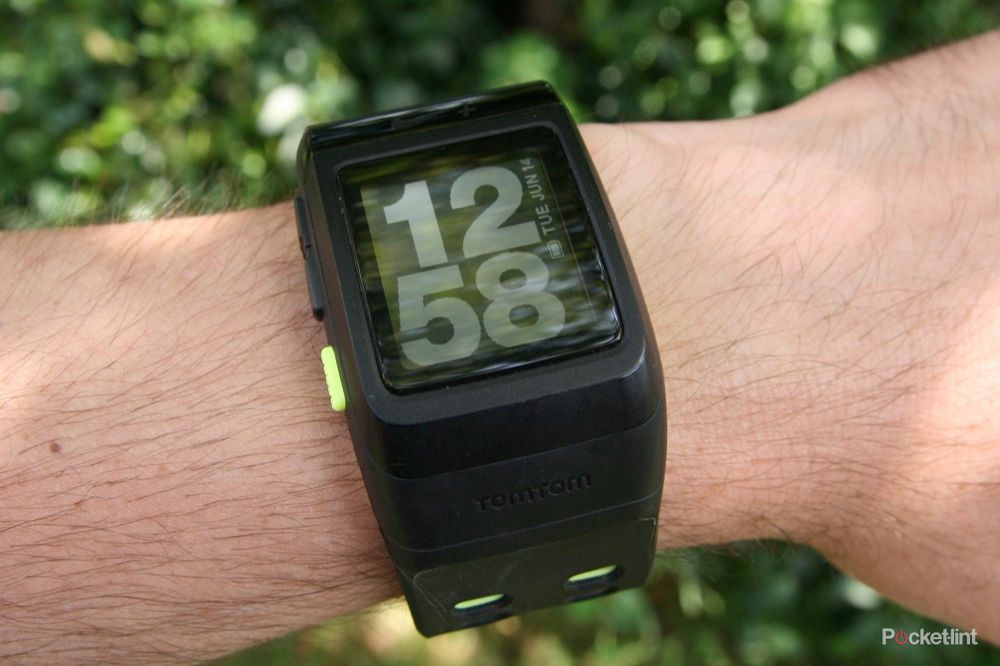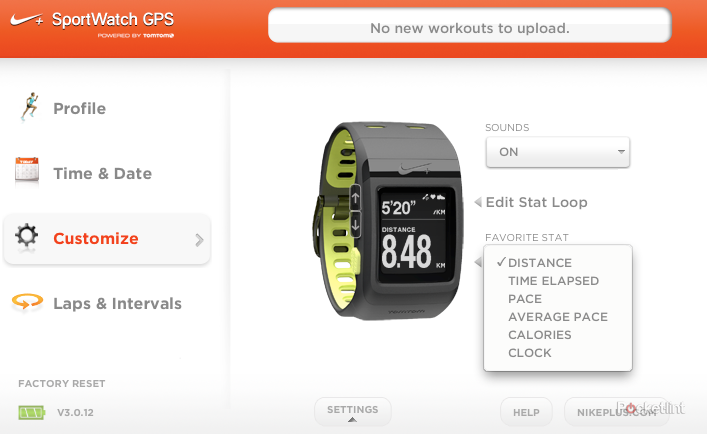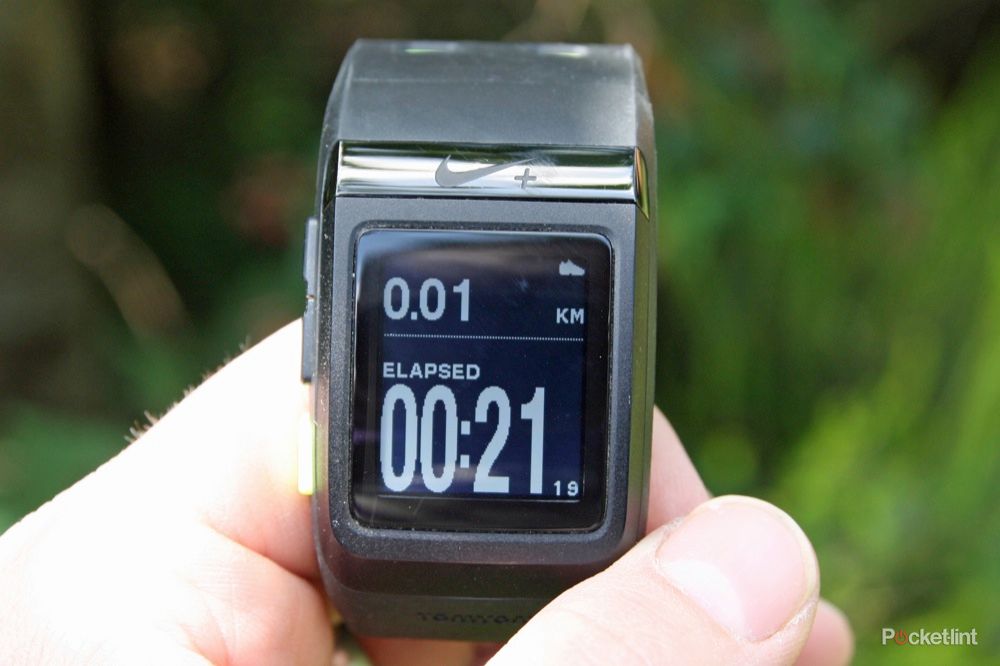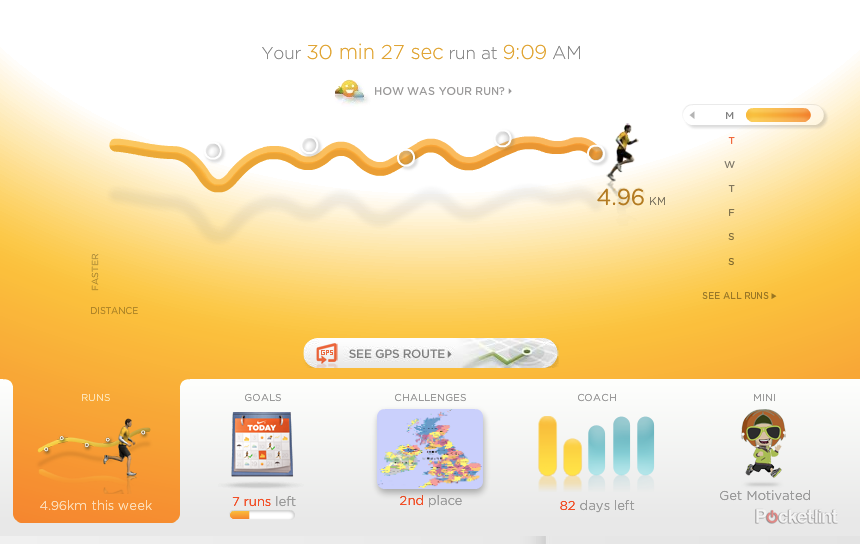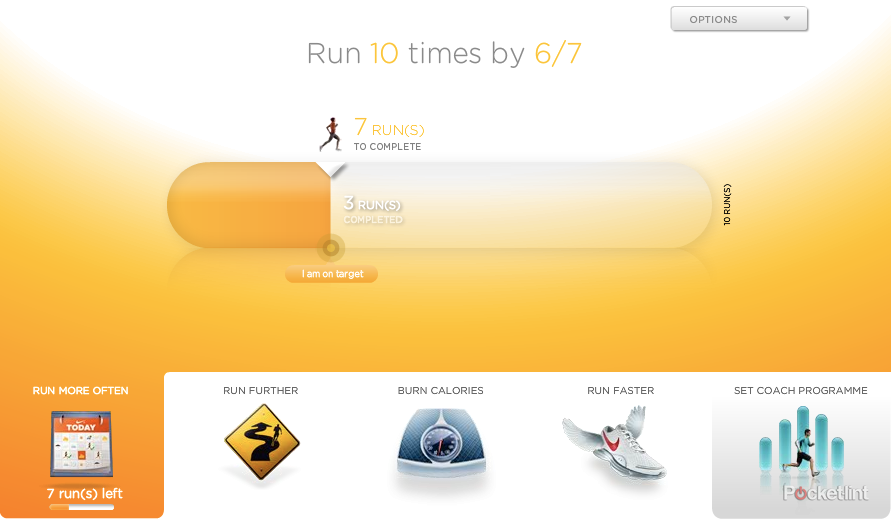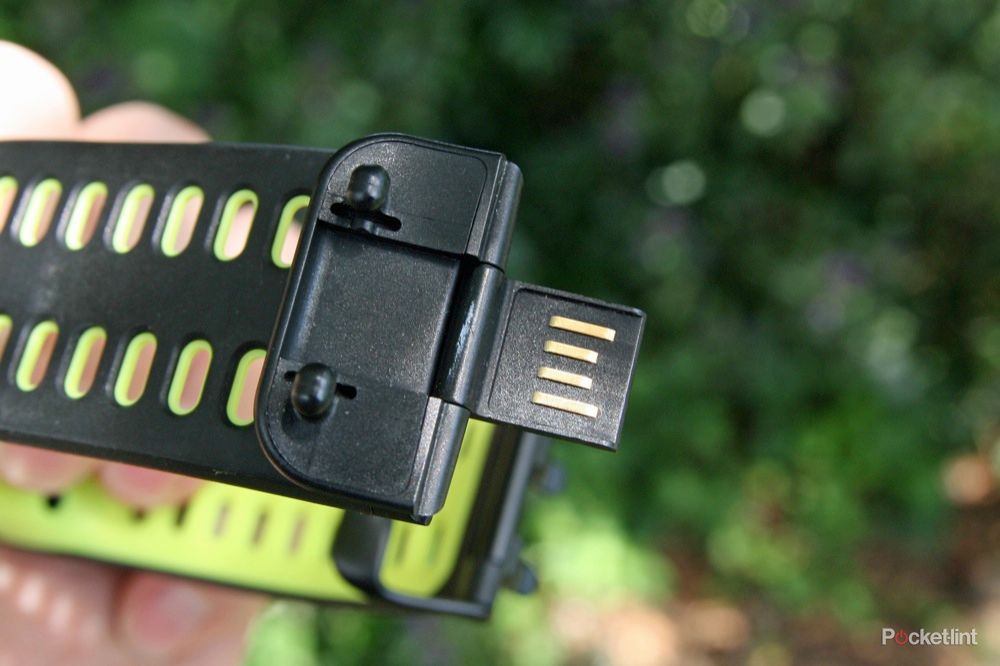Nike+ has been around for years, providing a clever and engaging online logging service and community with a range of accessories to monitor your performance. Their latest running watch sees then link up with GPS masters TomTom. The fusion brings GPS tracking into a compact watch.
Our quick take
The Nike+ SportWatch GPS, with TomTom power, is a great running watch. Its use is simple, meaning it is well suited to beginners or those who don’t want to be overwhelmed by some of the more complicated systems from Garmin, Suunto, Timex or Polar. It also lets you expand its functionality. If you find that you want to add heart rate in the future, you just buy the strap. If you don’t want to use the Nike+ sensor you don’t have to.
Nikeplus.com is a great community, with plenty of information, feedback and options to make your running more engaging and help keep you motivated. The website is a little buggy and some of the features it claims to offer don’t work, but we don’t think they’re significant enough to ignore what the system overall offers you.
We also love the fact that the Nike+ SportWatch GPS is comfortable enough to wear every day. Many sport watches are too bulky, or too fiddly and Nike have cracked that nut. Some more serious runners might find that they want more control locally over their device, or that they want workouts they can add, and if that’s the case you’ll need to look elsewhere.
The price is a little on the high side, as you can find rival devices for quite a bit less, but the overall design, the simplicity and the experience make us think it is a price worth paying.
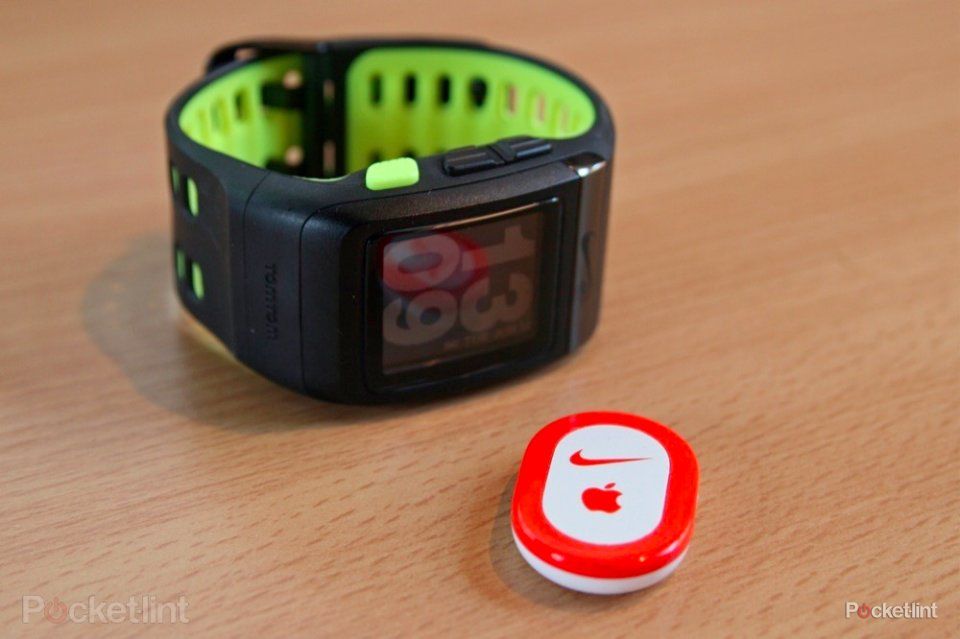
Nike+ SportWatch GPS - 4.5 / 5
| FOR | AGAINST |
|---|---|
|
|
Design
In the past few years we’ve seen GPS watches lose a lot of weight, slimming down to be not much chunkier than some of their regular rivals. The Nike+ SportWatch GPS is around the size of a Casio G Shock watch, so it’s still chunky, but not in a way that makes it look or feel cumbersome. It is compact enough and comfortable enough to wear as a regular watch - something that we’ve seen lots of people do with the likes of Polar HRM watches.
The black outer of the watch is paired with a neon yellow interior. When worn the yellow is less obvious but we like the effect: it is sporty in looks as well as function. The wide strap offers up double holes for extra stability and security, the very end of the strap featuring two lugs that click into holes to stop the end flapping around.
The strap features another hidden detail which is the USB connection. Rather than offering a female Mini-USB connection which many watches do, Nike have put on a full-sized male USB connector. Its placement on the end of the strap is a great bit of design and never fails to impress those we show it to. It means that you can connect the watch directly to a computer without needing an extra cable. We’ve not seen a mention of water resistance, but we can’t imagine that USB connection will take well to repeated immersion in water.
Getting up and running
Before you head out the door there is a little preparation to be done. You’ll soon realise that you can’t change the settings on the SportWatch to any great degree. In fact, if you’re looking for a standalone device, then this certainly isn’t it. The Nike+ side of things means that you’ll need access to a computer and the Internet to make use of the features the watch has to offer.
First up you can’t even set the time. This is something of a negative as you’ll have to plug in to your PC or Mac to set the current time on your watch. Like many devices, using the companion software on your computer is actually much faster than it would be to press buttons repeatedly and navigate on-screen menus, so whilst the Nike watch has a dependency it brings with it a number of benefits.
After a quick installation of the Nike+ Connect application, you’ll find that you have control over your new device. This not only lets you set the time (system time or custom time) but also lets you plug in your details, like your weight, which it will use to calculate your calories burnt. You’ll also need an account on Nikeplus.com, which we’ll talk about more in a second.
Pavement pounding
In the box you get the watch and the Nike+ sensor. The Nike+ sensor is an optional element to the package, but essentially it detects your footstrikes and sends this information to the watch, along with the GPS data. The Nike+ sensor is designed to be inserted into the sole of Nike+ shoes specifically designed to accept it.
If you’re already using another brand of shoes, you can always buy an accessory to attach the Nike+ sensor to your laces, such as The Shoe Pouch (about £5 from online retailers), to make use of the sensor. The idea of the sensor is to continue to supply data if you happen to lose GPS reception.
We found the GPS reception and pick-up time was very good. TomTom take the credit for this, with Nike choosing a named partner for their watch, rather than just doing the GPS aspect themselves. In reality there is nothing to link the watch to your TomTom satnav experience, there is no route mapping in the device itself. Still, as the GPS experience is good, both Nike and TomTom can walk away from the co-branding feeling good.
You can also use a Polar Wearlink heart rate strap to feed in more info, although this is an additional extra that will cost you around £50. We didn’t test the SportWatch with the heart rate strap so we’re not certain if you can use any Wearlink strap, or if you need the Nike+ specific one.
There are three buttons on the left-hand side of the watch, the bottom yellow button is basically a start/stop/select button, with the others acting to rotate through screens or options. A long press on the yellow button will fire you straight into a run, with the screen telling you that it is linking the sensors.
Just do it
With sensors linked, all that is left for you to do is start running. The display divides into two sections. The main section on the bottom is the largest and you can select what you want to be shown from the settings menu in Nike+ Connect, choosing from distance, elapsed time, pace, average pace, calories and the clock.
The top section (also customisable) can then be rotated through using the two black buttons on the side of the watch. This means that whatever you choose for the main display, you can get to your other stats on the top screen. Promised the wife you’d be home in time for lunch? No problem, you can show the time. Need to maintain a particular pace to stand the best chances of hitting a PB at your next race? No problem, just flick through to pace.
Nike uses “white on black” for the display (although in reality both are shades of grey). We’ve seen this before but in the case of the SportWatch everything is bold enough to be visible so reading the details is never a problem. There is also a light that can be activated by tapping the front of the watch, in case you need to check the details on those early winter morning runs.
The yellow button not only starts and stops, but will also pause the run (if you need to). You can also setup the watch to let you manual punch the lap button if you want to check your splits on a repeated route, rather than by distance.
Crunching stats with Nikeplus.com
Press the button to end your run and you’ll get a little motivational message so you can give yourself a pat on the back. It’s a blink and you’ll miss it affair and we’ve always found the stats to be a mite more interesting. From the display you’ll be able to read off the time, distance, av pace and calories burnt.
After your run, the watch will return back to showing you the clock time. The watch menus can be accessed via the black buttons giving you four options: Clock, Run, History and Records. We’ve already covered the Run section and essentially the History section details the runs you’ve completed (last 50) with all the details listed above. Finally the Records section will flick through some of your achievements: total distance, fastest mile, fastest km, fastest 5k, fastest 10k and longest run.
But the SportWatch itself is only a very small part of the Nike+ ecosystem. The most interesting parts are within the Nike+ community online. Plug your watch into your computer and your stats are added to your profile on Nikeplus.com. You can set various levels of privacy so you can share your information with the community, Facebook and Twitter, although whilst we’ve been testing Nike+, these features haven’t been working.
What Nikeplus.com offers you is a much more digestible method of seeing what you’ve been up to. It’s all presented nicely, so on the landing page you’ll see a graph of your run, with easy access to your statistics. Statistics can be scary or off-putting for some people but Nike have managed to put them into an understandable and interesting format.
You’ll be able to view your runs in various forms, from the individual pace graph of a single run, to all your runs over a year, month or week. Totals are totted up for you and main achievements lists at the bottom of the page. You’ll also be able to view your run on a map and play the route trace, surrounded by your key stats - fastest and slowest pace, elevation, highest and lowest points, etc. You’ll also be presented with km splits, which longer runners might find really useful.
Nikeplus.com also offers a range of interesting features to contribute to your running too. There are goals you can set which Nike+ will track, awarding medals when you complete them. Goals are suggested too, so if you don’t run regularly, it will suggest you set a goal to do so. There are also community challenges, so you can join a team and contribute your miles to an overall result, for example seeing which UK county can run the furthest total over the a year.
There is also a useful Coach option. This will let you sign-up to a training programme that Nikeplus.com then keeps track of as you do your running. The schedules look well designed, but could be enhanced. You can select the start date, but you can’t select a race date to work backwards from, so you’ll have to count back the weeks so you hit the race date you need. Also, your target runs aren’t added to the watch itself. Some systems will tell you how far you are running on a particular session, but with the Nike+ system you have to look it up online and remember what distance you are supposed to cover.
So what’s the downside?
With a lot of the Nike+ SportWatch GPS watch dependant on Nikeplus.com you’ll need to make sure you have a connection to the Internet as there is effectively no offline mode. We also found that some areas of the website are a little buggy, or won’t always load their content. We’ve been trying to update our profile picture and it won’t work, as well as build our Nike+ friend community, but the offer to import Gmail contacts always ends in failure.
Essentially though, we’ve been able to get to the things we care about the most and that’s the statistics. The additional extras we’d like to see ironed out, but at the moment they aren’t a deal breaker.
With the Nike+ SportWatch GPS being fairly slim we’ve found it comfortable enough to wear as a daily watch. You’ll get about a month from a full charge of the battery in this mode, although using it to trace your runs with the various sensors will deplete the battery much faster. It charges from USB, another reason you’ll have to hook-up to your computer. One downside is that if the battery goes flat it’ll lose the time settings, so if you happen to be away from your computer (perhaps travelling) and you don’t have access to a USB to charge it then you’ll be stuck without the correct time on the watch.
To recap
The overall design and simplicity of operation make the Nike+ SportWatch GPS worth the outlay

